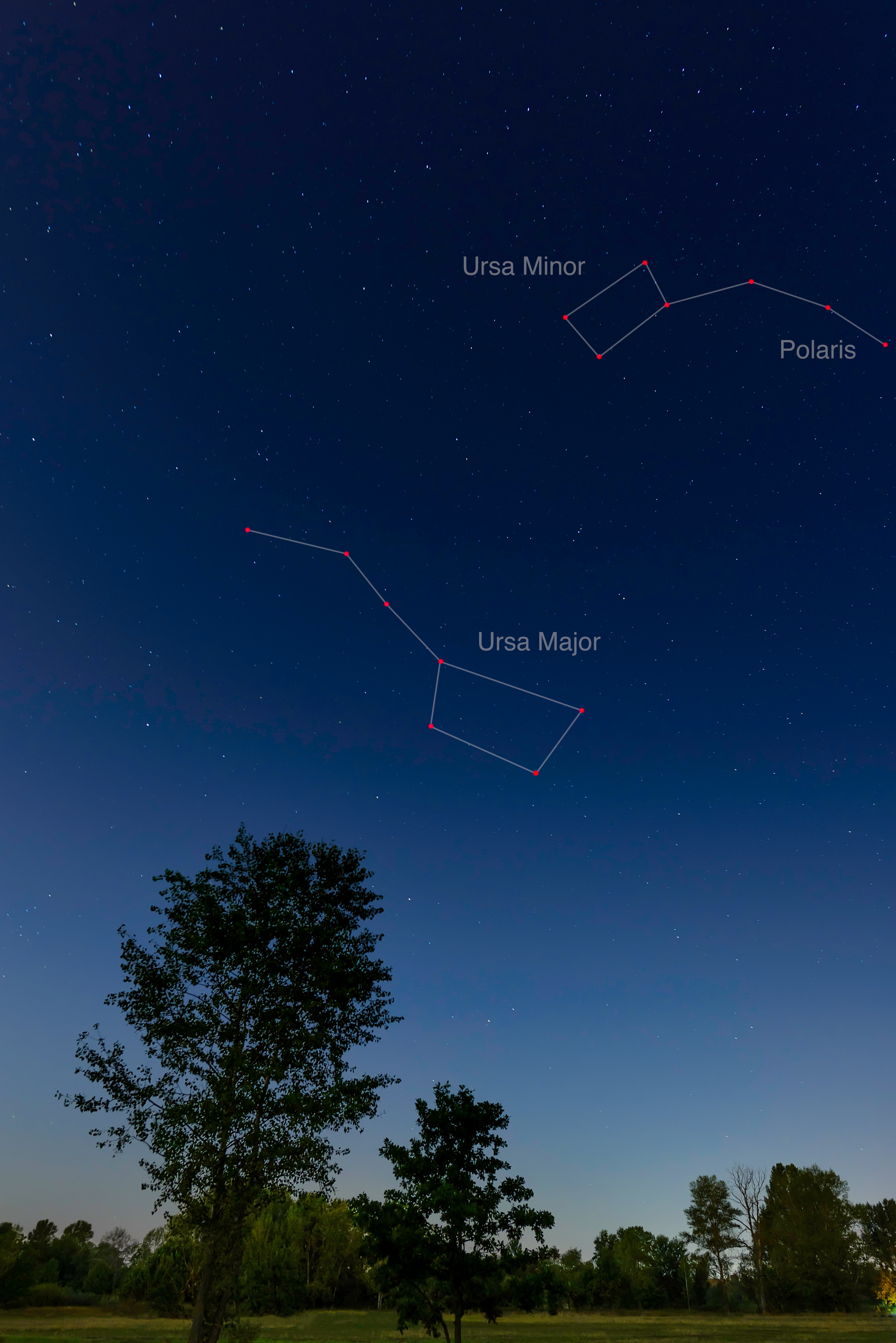Big and Little Dippers are the names of two groups of stars that are easy to recognize in the northern sky. They are shaped like long-handled cups, or dippers.

The Big Dipper
consists of seven stars that can be used to point to other parts of the sky. For example, an imaginary line extended northward from the two stars at the front of the cup points to Polaris, the North Star . The line points to the constellation Leo when extended southward. An easy way to find Leo is to imagine water leaking from the bottom of the cup and falling on the lion.

The Big Dipper forms part of the constellation of Ursa Major , the Great Bear. The cup forms the hindquarters of the bear, the handle forms the tail, and fainter stars outline the head and legs. The star Mizar, at the center of the handle, has a nearby companion star named Alcor. These two stars have been used for hundreds of years as a test for keen eyesight. Viewed through a telescope, Mizar appears as two stars (see Binary star ).
The Little Dipper
forms almost the entire constellation of Ursa Minor , the Little Bear. It consists mostly of faint stars. As a result, it is hard to find unless the sky is very dark. But the Little Dipper has long been important as an indicator of north, because the North Star lies at the end of this dipper’s handle.
In Greek mythology, Ursa Major is the nymph Callisto and Ursa Minor is her son Arcas. One myth says Zeus loved Callisto and thus angered his wife, Hera. When Hera tried to kill her, Zeus changed Callisto into a bear. Arcas was unaware that the bear was his mother and tried to kill her. Zeus changed Arcas into a bear and put both bears into the sky to protect them. Writers around the year 1600 said the bears had long tails because Zeus pulled them into the sky by the tail.
Position of the dippers.
On January evenings, the Little Dipper is west of the Big Dipper. The Little Dipper’s handle points up and the Big Dipper’s, down. On July evenings, the positions are reversed. The dippers’ positions also change at night because of the earth’s rotation.
